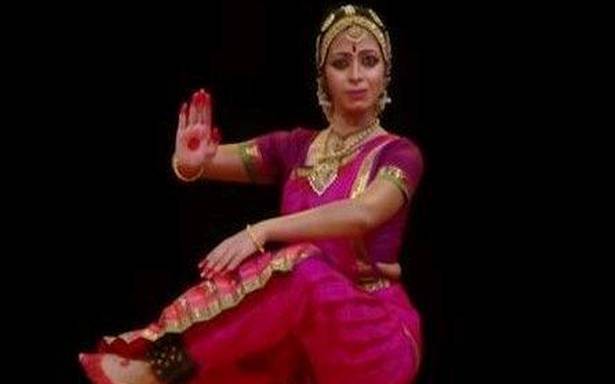Apoorva Jayaraman injected the innovative into the traditional
Young dancers often face the dilemma of choosing between a traditional repertoire and exploring new ideas. Apoorva Jayaraman, performing for the 15th Music Academy dance festival, chose to combine the two. The central composition was rooted in a traditional varnam, while the rest were from varied sources.
She opened with ‘Nasadyasooktam’ – Hymn of creation’, sourced from the 10th Mandala of Rig Veda. Focused on cosmology and the origin of universe, it was woven around questions like the process of creation, the union between being and non-being, and male-female principles.
Dancing the abstract
Ananthu’s soothing rendition set the mood for the abstract concept. Apoorva used a blend of fluid movements and vibrant rhythmic patterns. One sequence where she used only her hands, visible from the side wing, with a spotlight to highlight the space and her gestures, was dramatically visualised.
As this is the centenary year of Guru Dandayudhapani Pillai, Apoorva chose his ragamalika varnam ‘Swamiyai Azhaithodiva Sakhiye’. The familiar idea seen in many varnams, of the nayika beseeching her friend to fetch her lord, formed the crux. Interestingly, in place of a coy, distressed nayika, Apoorva depicted her as a confident woman.
The depictions of the peacock, elephant and snake, and the use of taanam and swaras for the charanam added interest. Vocalist Keerthana Vaidhyanathan’s excessive use of brigas in certain portions of the song was highly distracting and the lengthy jathi korvais and nritta explorations disturbed the flow.
The next piece, inspired by poet Pudumaipittan’s ‘Sapavimochanam’, was set to music by Rajkumar Bharathi. The story of Ahalya springing to life when Rama’s feet touch her, her admiration for Rama as upholder of dharma, her disillusionment with dharma itself and desire to become a stone again came alive in Apoorva’s depictions.
The dancer ended with ‘Nrittamalika’, an ode to India in the 75th year of Independence and Bharatiyar’s centenary year. Choreographed by Priyadarshini Govind and set to music by Rajkumar Bharathi, the juxtaposing of a thillana with ‘Bharatha Desamendru’ was a lukewarm experience. Neither the rhythmic power of a thillana nor the emotions of the lyrics came through with conviction.
The musical team included Jayashree Ramanathan (nattuvangam), Guru Bharadwaj (mridangam), Anantakrishnan (violin), and Sruthisagar (flute).
The Chennai-based writer
reviews classical dance.
Source: Read Full Article

